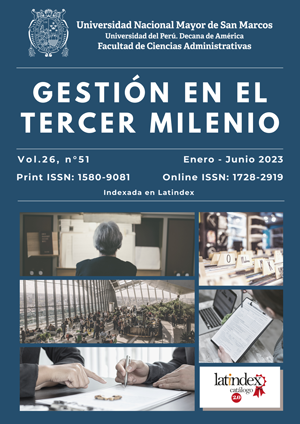Good practices in the preparation of PhD theses
DOI:
https://doi.org/10.15381/gtm.v26i51.25532Keywords:
good practices, advising, doctoral thesisAbstract
The purpose of this article is to provide some reflections and considerations in relation to the way in which universities carry out postgraduate thesis advising, considering that the completion of a PhD thesis requires rigorous work both by the PhD student and by the advisors, with the academic unit in charge of the postgraduate program being responsible for the latter. In this regard, the aim of the article is to identify practices in the preparation of PhD theses in Peruvian universities in order to propose good practices in thesis advising, adopting measures to regulate the procedure and to ensure that the PhD student receives adequate guidance to achieve the objective of graduation with a high-quality academic paper through good practices. This is motivated by the fact that there are often different criteria not only among schools, but also among universities, regarding the way to guide the preparation of doctoral theses, added to the absence of research policies, lack of development of research lines by the universities according to their area of influence and, occasionally, poor tutor preparation. In this order of ideas, university or academia, as it is rightly called today, has a great social responsibility that goes beyond its public, private or associative nature toward national development. As a result, rather than being limited to professional training, its contribution should comprise the development of technological knowledge to meet social needs.
Downloads
Published
Issue
Section
License
Copyright (c) 2023 Luis Alonso Castro Pérez, Felix Armando Rivera Leon

This work is licensed under a Creative Commons Attribution 4.0 International License.
THE AUTHORS RETAIN THEIR RIGHTS:
(a) The authors retain their trademark and patent rights, and also over any process or procedure described in the article.
(b) The authors retain the right to share, copy, distribute, execute and publicly communicate the article published in Gestión en el Tercer Milenio journal (for example, place it in an institutional repository or publish it in a book), with acknowledgment of its initial publication in the Gestión en el Tercer Milenio.
(c) Authors retain the right to make a subsequent publication of their work, to use the article or any part of it (for example: a compilation of their work, lecture notes, thesis, or for a book), provided that they indicate the source. of publication (authors of the work, magazine, volume, number and date).













